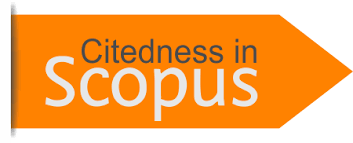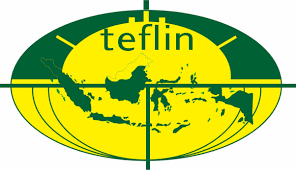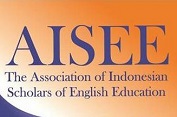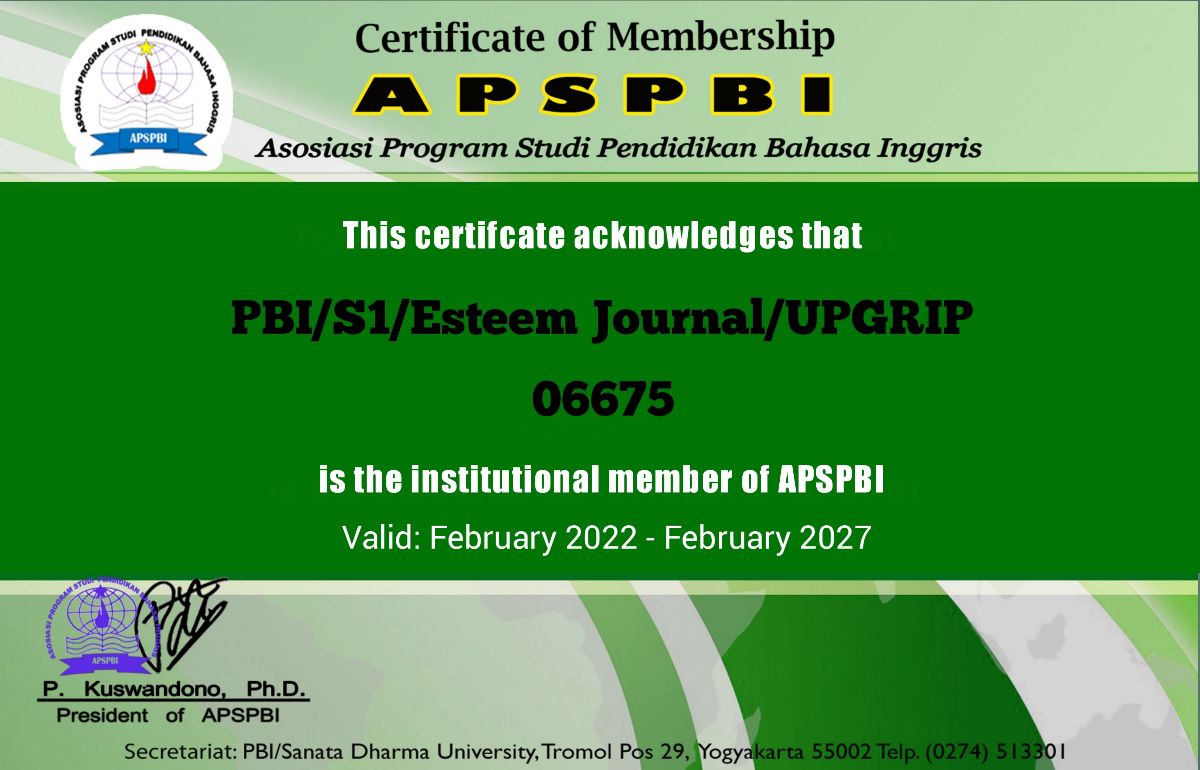LANGUAGE IN THE DIGITAL AGE: GENRE ANALYSIS OF LINKEDIN PROFILE SUMMARY DISCOURSE
DOI:
https://doi.org/10.31851/esteem.v7i2.15229Abstract
This study aims to identify linguistic features in each move and strategy used in LinkedIn profile summaries. The methodology employed is descriptive qualitative research, with data sourced from English-language profile summaries written by Indonesians. The findings reveal a diverse range of linguistic features, all aimed at achieving the communication goals of the profile summary, which include self-promotion, personal branding, and creating a positive image for the reader. These findings are expected to assist LinkedIn users in crafting more attractive and effective profile summaries. The novelty of this research lies in its analysis of contemporary discourse genres that evolve with the times.
References
Andina, N. I., Poerana, A. F., & Kusumaningrum. (2022). Konstruksi Identitas Pengguna Media Sosial LinkedIn. NUSANTARA: Jurnal Ilmu Pengetahuan Sosial, 9(8), 2775–2787.
Basthomi, Y. (2012). Curriculum Vitae: A Discourse Celebration wih Narcisstic Allusions. TEFLIN Journal, 23(1), 1–24. https://doi.org/10.15639/teflinjournal.v23i1/1-24
Choi, S., & Jeon, J. (2011). A Corpus-based Genre Analysis of Curriculum Vitae: Genre Writing Instruction in EFL Contexts. 새한영어영문학, 58(4), 289–318. https://doi.org/https:/doi.org/10.25151/nkje.2011.53.4.014
Constantinov, C., Popescu, P.-Ștefan, & Mocanu, M. (2019). Identifying LinkedIn Usage Patterns Based on Feedback from Students and Fresh Graduates. 1–6. https://doi.org/http:/doi.org/10.1109/ROEDUNET.2019.8909507
Creswell, J. W. (2014). Research Design: Qualitative, Quantitative and Mixed Methods Approaches (4th ed.). SAGE.
Furka, I. (2008). THE CURRICULUM VITAE AND THE MOTIVATIONAL LETTER: A RHETORICAL AND CULTURAL ANALYSIS. Working Papers in Language Pedagogy, 2, 18–37. https://doi.org/10.0000/langped.elte.hu/WoPaLP2-2008-furk
Harmer, J. (2007). The Practice of English Language Teaching (4th ed.). Pearson Education Ltd.
Kenton, W. (2022). What a Call to Action (CTA) Is and How It Works. Investopedia. https://www.investopedia.com/terms/c/call-action-cta.asp. Accessed 2 May 2024.
Marin, G. D., & Nilă, C. (2021). Branding in social media. Using LinkedIn in personal brand communication: A study on communications/marketing and recruitment/human resources specialists perception. Social Sciences & Humanities Open, 4(1). https://doi.org/10.1016/j.ssaho.2021.1001 74
Merriam Webster. (n.d. -a). In Hi. Merriam Webster Inc. https://www.merriam-webster.com/dictionary/hi. Accessed 3 May 2024.
Merriam Webster. (n.d. -b). In Hello. Merriam Webster Inc. https://www.merriam-webster.com/dictionary/hello. Accessed 3 May 2024.
Mohamed, N., Halim, N. S., Husin, N., & Mokhtar, N. (2017). An Analysis of Promotional Genre in Job Application Letters. E-Academia Journa, 6(1), 58–69.
Nadeem, F. (2023). The Power of a Great LinkedIn Profile Summary. LinkedIn. https://www.linkedin.com/pulse/power-great-linkedin-profile-summary-faisal-nadeem-chrp/
Nursani, A., & Hardjanto, T. D. (2024). Personal branding strategy in LinkedIn profile summary: A rhetorical move analysis. Unpublished.
Okyiosa, A. N. R., & Irwansyah. (2022). Penggunaan LinkedIn untuk Personal Branding Karyawan. ARTCOMM - Jurnal Komunikasi Dan Desain, 2(5), 67–82. https://doi.org/10.37278/artcomm.v5i2.537
Parengkuan, E., & Tumewu, B. (2014). Personal Brand-Inc. : Rahasia untuk Sukses dan Bertahan di Karir. PT Gramedia Pustaka Utama.
Reilly, K. (2022). 14 LinkedIn Profile Summaries That We Love (And How to Boost Your Own). LinkedIn Talent Blog. https://www.linkedin.com/business/talent/blog/product-tips/linkedin-profile-summaries-that-we-love-and-how-to-boost-your-own. Accessed 2 May 2024.
Swales, J. M. (1990). Genre analysis: English in academic and research settings. Cambridge University Press.
Tarawneh, M., & Hajjaj, D. (2021). A sociolinguistic analysis of personal naming in jordan. International Journal of Applied Linguistics & English Literature, 10(5), 40–44. https://doi.org/10.7575/aiac.ijalel.v.10n.5p.40
Tobback, E. (2019). Telling the world how skilful you are: Self-praise strategies on LinkedIn. 13(6), 647–668. https://doi.org/10.1177/1750481319868854
van de Ven, N., Bogaert, A., Serlie, A., Brandt, M. J., & Denissen, J. A. (2017). Personality perception based on LinkedIn profiles. 32(6), 418–429. https://doi.org/10.1108/JMP-07-2016-0220
Wibowo, N. J. H. (2019). Communicating Identity in LinkedIn from Indonesian Cultural Perspective. Jurnal K@ta, 21(2), 51–59. https://doi.org/10.9744/kata.21.2.51-59
Widi, S. (2022). Pengguna Linkedin di Indonesia Capai 22,07 Juta pada Juli 2022. Data Indonesia. https://dataindonesia.id/digital/detail/pengguna-linkedin-di-indonesia-capai-2207- juta-pada-juli-2022. Accessed 2 May 2024.
Wijayanti, S. H., & Sulistyaningsih, E. (2019). Format, Design and Content of Curriculum Vitae in a Developing Country. Proceedings of the Social and Humaniora Research Symposium (SoRes 2018), 307, 328–332. https://doi.org/10.2991/sores-18.2019.76
Downloads
Published
Issue
Section
License
Copyright (c) 2024 Asyipa Nursani, Tofan Dwi Hardjanto

This work is licensed under a Creative Commons Attribution-NonCommercial-ShareAlike 4.0 International License.
Copyright Notice
Authors who publish with this journal agree to the following terms:
In order to assure the highest standards for published articles, a peer review policy is applied. In pursue of the compliance with academic standards, all parties involved in the publishing process (the authors, the editors and the editorial board and the reviewers) agree to meet the responsibilities stated below in accordance to the Journal publication ethics and malpractice statement.
Duties of Authors:
- The author(s) warrant that the submitted article is an original work, which has not been previously published, and that they have obtained an agreement from any co-author(s) prior to the manuscript’s submission;
- The author(s) should not submit articles describing essentially the same research to more than one journal;
- The authors(s) make certain that the manuscript meets the terms of the Manuscript Submission Guideline regarding appropriate academic citation and that no copyright infringement occurs;
- The authors(s) should inform the editors about any conflict of interests and report any errors they subsequently, discover in their manuscript.
Duties of Editors and the Editorial Board:
- The editors, together with the editorial board, are responsible for deciding upon the publication or rejection of the submitted manuscripts based only on their originality, significance, and relevance to the domains of the journal;
- The editors evaluate the manuscripts compliance with academic criteria, the domains of the journal and the guidelines;
- The editors must at all times respect the confidentiality of any information pertaining to the submitted manuscripts;
- The editors assign the review of each manuscript to two reviewers chosen according to their domains of expertise. The editors must take into account any conflict of interest reported by the authors and the reviewers.
- The editors must ensure that the comments and recommendations of the reviewers are sent to the author(s) in due time and that the manuscripts are returned to the editors, who take the final decision to publish them or not.
Authors are permitted and encouraged to post online a pre-publication manuscript (but not the Publisher final formatted PDF version of the Work) in institutional repositories or on their Websites prior to and during the submission process, as it can lead to productive exchanges, as well as earlier and greater citation of published work (see The Effect of Open Access). Any such posting made before acceptance and publication of the Work shall be updated upon publication to include a reference to the Publisher-assigned DOI (Digital Object Identifier) and a link to the online abstract for the final published Work in the Journal.





























